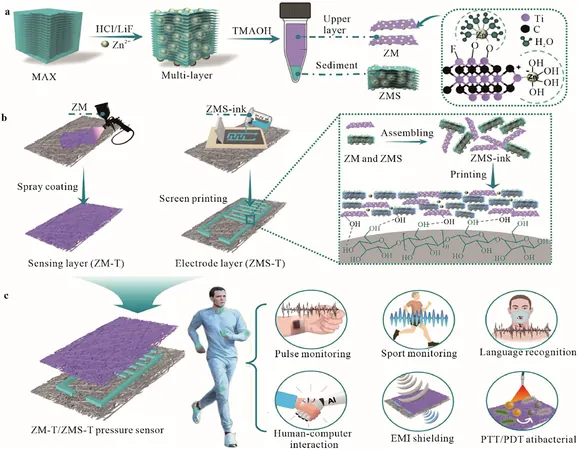
Breakthrough in Sustainability: New Cellulose-MXene Composites Set to Revolutionize Multiple Industries!
2024-10-07
Author: Siti
Why Cellulose-MXene is a Game-Changer
Cellulose is already celebrated for its biodegradability and compatibility with living organisms, derived from sources like wood pulp and bacterial nanocellulose. Known for its natural abundance, cellulose serves as an ideal building block for composite materials aimed at enhancing sustainability. Coupling it with MXene—which boasts high hydrophilicity, electronic conductivity, and a remarkable nonlinear absorption coefficient—offers a unique opportunity to create materials with unparalleled performance characteristics.
Exceptional Properties Unveiled!
This new composite material showcases a host of groundbreaking properties, including photothermal, electrothermal, biocidal, and piezoelectric characteristics, making it incredibly versatile for a wide range of applications. Lead researcher Xiao and the team achieved a significant breakthrough by fully utilizing MXene precursors to develop a smart pressure sensor and advanced protective materials. These innovations display astonishing pressure sensitivity, efficient shielding from electromagnetic interference, and impressive antibacterial properties.
Smart Materials for Real-World Solutions
An exciting aspect of this research involved the in-situ growth of zeolitic imidazolate framework-8 (ZIF-8) directly on the surface of cellulose nanofibers. This process greatly enhanced the biocidal activity and efficiency of electromagnetic shielding, paving the way for cellulosic materials that are not just smart but multifunctional. Imagine wound dressings that not only protect but also promote healing, or pressure sensors that can track human movements with incredible sensitivity!
The Growing Demand for Bioproducts
Interestingly, while the Cellulose-MXene composites are gaining attention, another sector is simultaneously flourishing: the chestnut tannin market. With new extraction plants emerging to satisfy skyrocketing demand, countries in Europe—especially Italy, Slovenia, France, Portugal, and Spain—are leading this movement. Chestnut tannin is emerging as a powerful bioresource with a wealth of potential applications across various sectors, further highlighting the expanding bioeconomy.
Conclusion: Shaping a Sustainable Future
The integration of MXene and cellulose does more than just create advanced materials; it marks a significant step towards a sustainable future where intelligent and multifunctional properties of composites can be harnessed for various critical applications. The promise of Cellulose-MXene composites and chestnut tannin demonstrates that we're on the verge of a new era in sustainable materials, setting the stage for innovation in energy, healthcare, and environmental protection. Keep an eye on these advancements— the future is bright, and it’s biodegradable!


 Brasil (PT)
Brasil (PT)
 Canada (EN)
Canada (EN)
 Chile (ES)
Chile (ES)
 España (ES)
España (ES)
 France (FR)
France (FR)
 Hong Kong (EN)
Hong Kong (EN)
 Italia (IT)
Italia (IT)
 日本 (JA)
日本 (JA)
 Magyarország (HU)
Magyarország (HU)
 Norge (NO)
Norge (NO)
 Polska (PL)
Polska (PL)
 Schweiz (DE)
Schweiz (DE)
 Singapore (EN)
Singapore (EN)
 Sverige (SV)
Sverige (SV)
 Suomi (FI)
Suomi (FI)
 Türkiye (TR)
Türkiye (TR)